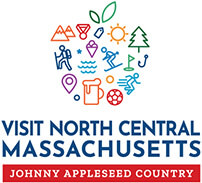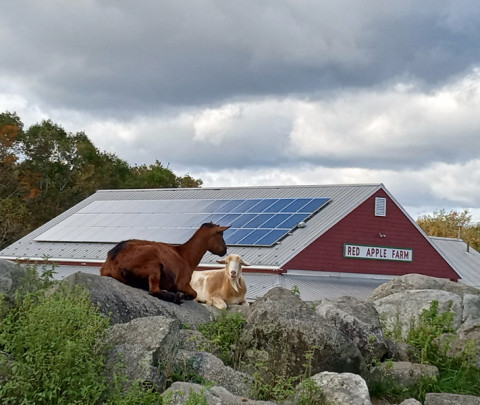Thanksgiving
- Visit North Central
Almost 400 years ago, there was a different reason in New England to be thankful. In September 1620, 102 passengers and 30 crew members set sail on a ship called the Mayflower from Plymouth, England heading on a 3,000+ mile journey for the New World. Some went for religious freedom. This group had already left the English Church and formed a group known as the Separtists. Before coming to America, they first relocated to the Netherlands but soon were in danger of dwindling in membership in a culture they came to despise. Others on the Mayflower went as skilled workers, merchants, craftsmen, etc. And others were children or orphans.
About 2 months after departure, the Mayflower landed at the tip of Cape Cod in the midst of ice and snow. They explored for another month and in December, landed at present day Plymouth and built the well known settlement there (it was a previous Native American settlement, the Patuxet, which had been wiped out with a plague in 1617) while living part of the time out of the Mayflower. After the harsh winter, 50% of the passengers and crew had died. Women were without their children and husbands, men were without their wives and children, children were without parents. It was not a promising start to such an important milestone in history.
The Mayflower, however, had not been the first European ship to land in the area. As early as 1525, Europeans had been mapping the east coast of North America. In the very early 1600s, the English had sailed to the new world in search of cod fish since their part of the world had been overfished. Some sources say that Squanto the Native American (also known as Tisquantum) was first kidnapped by one of these ships and brought to England. He stayed in England for a few years before he was able to catch a ship back to New England with Captain John Smith. Smith mapped much of New England and then left his crew under the charge of Thomas Hunt. Hunt then decided to kidnap several natives including Squanto for possibly a second time. Squanto was sold as a slave in Spain and eventually made his way back to England where he worked for a ship builder and learned to speak English. Then, in 1618 (some sources say 1619), he made his way back to America with Captain Thomas Dermer and learned that it was his tribe who had been wiped out a year or two earlier, where the Pilgrims would eventually settle.
Upon moving to shore completely in March, the Pilgrims were met by a Native named Samoset who spoke broken English picked up from fishermen he had met through his home tribe in present day Maine. A week later, Squanto met with the Pilgrims with Samoset and Massasoit, the chief of the nearby Wampanoag Indians (with whom Squanto had previously negotiated the release of Thomas Dermer). Squanto became the translator between the Natives and the Pilgrims as well as teaching farming strategies (such as using fish for fertilizer), where to catch eels, and possible trade with other tribes to the new settlers.
The results? There are 2 accounts of the first Thanksgiving. The first is by Edward Winslow written in a letter dated December 12, 1621:
“Our corn did prove well, and God be praised, we had a good increase of Indian corn, and our barley indifferent good, but our peas not worth the gathering, for we feared they were too late sown. They came up very well, and blossomed, but the sun parched them in the blossom. Our harvest being gotten in, our governor sent four men on fowling, that so we might after a special manner rejoice together after we had gathered the fruit of our labors. They four in one day killed as much fowl as, with a little help beside, served the company almost a week. At which time, amongst other recreations, we exercised our arms, many of the Indians coming amongst us, and among the rest their greatest king Massasoit, with some ninety men, whom for three days we entertained and feasted, and they went out and killed five deer, which they brought to the plantation and bestowed on our governor, and upon the captain and others. And although it be not always so plentiful as it was at this time with us, yet by the goodness of God, we are so far from want that we often wish you partakers of our plenty.”
The second was written in Of Plymouth Plantation later on by William Bradford:
“They began now to gather in the small harvest they had, and to fit up their houses and dwellings against winter, being all well recovered in health and strength and had all things in good plenty. For as some were thus employed in affairs abroad, others were exercising in fishing, about cod and bass and other fish, of which they took good store, of which every family had their portion. All the summer there was no want; and now began to come in store of fowl, as winter approached, of which this place did abound when they came first (but afterward decreased by degrees). And besides waterfowl there was great store of wild turkeys, of which they took many, besides venison, etc. Besides they had about a peck of meal a week to a person, or now since harvest, Indian corn to that proportion. Which made many afterwards write so largely of their plenty here to their friends in England, which were not feigned but true reports.”
The Pilgrims were truly thankful for their food. And most likely thankful for the improbable possibility of a native who could speak their own language!
Abraham Lincoln was the first President to proclaim Thanksgiving as the last Thursday of November in 1863. But then in 1941, President Roosevelt was the one to declare it a national holiday and make it the 4th Thursday of November (not always the last). As for the first Thanksgiving, it is not certain which day it was held on. The range is anywhere from September to November. But one thing remains most important, whatever the day, we should take time to be thankful.








